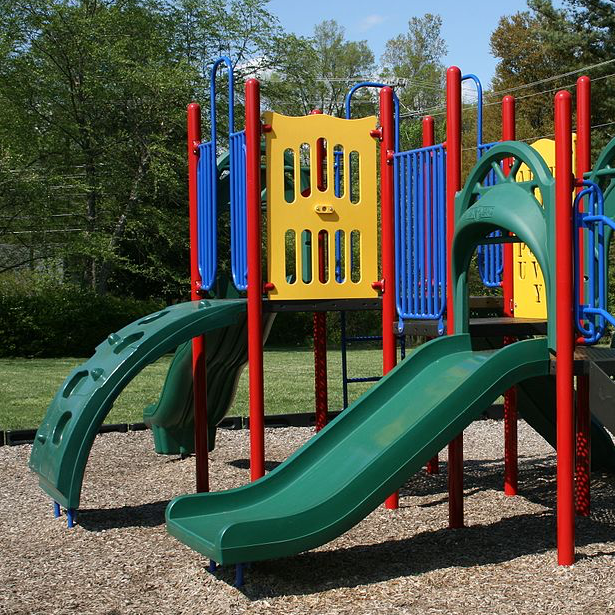School’s out for summer, and kids are bursting to get outside and hit area playgrounds. No surprise then that June is a particularly dangerous month for playground injuries. Before you let those kiddos loose, learn how adults are the key to playground safety with tips on equipment, clothing and safe behavior.
Adult Supervision Is the Number One Way to Prevent Playground Injuries
Seventy-five percent of playground injuries take place on public playgrounds.
According to the Centers for Disease Control (CDC), at least 200,000 children age 14 or younger are treated in emergency rooms each year for playground-related injuries. More than 10 percent of these are traumatic brain injuries (TBIs), and the rate of TBIs is rising.
Because public playgrounds are numerous and easily accessible, most kids spend their time on these rather than private playgrounds. Thus, the largest percentage of playground injuries take place on public facilities. Monkey bars and climbing equipment are responsible for the highest number of injuries.
But despite the risks, we know kids love playgrounds and benefit from the exercise and social interaction. The good news: Adults can play a key role in keeping kids safe on their favorite playgrounds with these tips and resources:
Keep Your Kids Safe With These Tips
- Areas underneath the equipment, known as fall surfaces, should be made of soft material such as wood chips, mulch, sand or rubber.
- Inspect equipment for any piece (especially metal) that may be hot from the sun.
- Watch for hazards or protrusions like bolts, hooks, stumps or rocks that could trip or cut children.
- Look for neglected maintenance, such as rusty or broken equipment.
- Make sure kids wear safe clothing. No loose scarves or hoodies with drawstrings, as these can become a strangulation hazard if entangled with equipment. Shoes should be comfortable for play and protect feet, like sneakers. Tie long hair back as well.
- Make sure there are strong and sturdy guardrails to prevent falls.
- Your children should be using age-appropriate equipment. Read all playground signs for warnings and instructions.
- Most importantly, the best way to prevent injuries is parental supervision. Talk to your kids about appropriate playground behavior before you visit the playground and watch them while you’re there.
More Resources for Safe Playgrounds
To ensure your local playground is safe, the National Recreations and Parks Association has a network of Certified Playground Safety Inspectors (CPSI). The CPSI certification program provides comprehensive and up-to-date training on playground safety issues, including hazard identification, equipment specifications, surfacing requirements and risk management methods. To find your local CPSI, click here.
A thorough playground safety checklist and ranking tool, created by the National Program for Playground Safety, can be found here. If you see safety hazards or poorly maintained equipment, reach out to the owner as soon as possible. In most cases, this will be a school or park district.
Keeping our kids safe while out on the playground is an issue we can all get behind, and one that benefits the community as a whole. So let’s all get out there and have some fun!
This article appeared in our June 2017 "You Should Know" e-newsletter.








